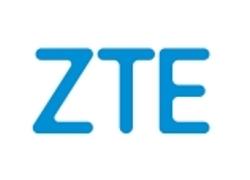ZTE Corporation, an international provider of telecommunications, enterprise and consumer technology solutions for the Mobile Internet, announced the launch of its simple distribution point unit (DPU) solution ahead of Broadband World Forum 2016.
Aiming to help carriers scale network capability through software defined networking (SDN), ZTE’s simple DPU solution addresses the unified management and service provisioning complications brought about by hybrid fibre to the home (FTTH) and fibre to the distribution point (FTTdp) scenarios, and is extremely viable for Europe’s long-term coexistence of copper and fibre networks.
The development of bandwidth-hungry services, as a result of big video, is bringing fibre closer to end users; while the development of G.Fast prolongs the life of copper infrastructure under certain conditions. Despite copper networks still being in use, carriers are looking for simple and transparent ways to maintain FTTdp networks and, most importantly, a smooth and easy migration to software defined networks similar to that of FTTH.
ZTE’s simple DPU solution first simplifies the distribution point, then specifies the optical line termination (OLT) to be the control point for the access domain; lastly it specifies the OLT to be the interface for SDN deployment as well as the gateway for open network and data traffic control.
The solution simplifies the multi-port DPU; extracts the complex packet forwarding, traffic classification, traffic control, quality of service (QoS) and virtual LAN (VLAN) tagging functions from the multi-port DPU; and channelises the multi-port DPU into several UNI-based physical channels. Ignoring the G.Fast port allows the multi-port DPU to become several optical network units (ONUs), allowing the OLT to become the only management and control point of the access domain.
As such, unified management and service provisioning under hybrid FTTdp and FTTH scenarios is made possible. Given the multi-port DPU is channelised into several separated channels, which are considered as pipeline resources of the SDN network, sliced and orchestrated into different VANs for the virtual carriers to lease, the virtual carriers do not need to focus on whether these access channels are from the FTTH or the physical multi-port DPU.
Cai Jingzhe, VP of ZTE, said: “ZTE has been leading the technical development in the access network segment. We proactively promote copper/fibre-based high-bandwidth development and hold the industry’s leading position in FTTH. Our FTTdp solutions have been adopted commercially in Japan as well as other international markets. With decades of enriched research and development experience in fibre and copper technologies, ZTE is committed to driving the development of access networks in order to provide ultra-fast, safe, open and simplified access networks to carriers.”
According to the Market Share Report: 2Q16 FTTx, DSL, and CMTS released by the market-leading consulting firm, OVUM, ZTE demonstrated outstanding market performance in fixed-line access from Q3 2015 to Q2 2016. As per OVUM, ZTE owns the largest market share in next-generation passive optical networks (PON) and is the fastest grower in fixed-line access with a slight increase in market share in copper infrastructure.
Comment on this article below or via Twitter: @ VanillaPlus OR @jcvplus






